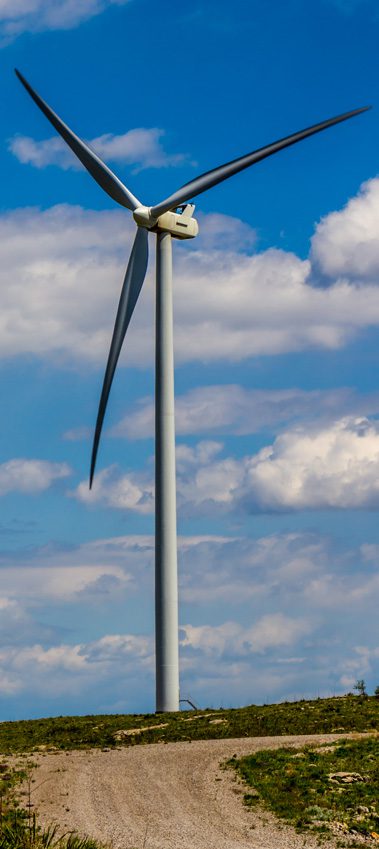 With energy discussions continuing to increase throughout the nation and the state, many are glad that one energy source is finally providing a breath of fresh air.
With energy discussions continuing to increase throughout the nation and the state, many are glad that one energy source is finally providing a breath of fresh air.
Over the past decade, wind power has swept across the country, and many are convinced that this source is the future of renewable energy.
Due to the instability of the oil industry, alternative energy sources are becoming more of a priority to many state and local governments. The advantage of wind power is that it is abundant, and thus much more consistent in cost than other sources. Another aspect of wind energy that is particularly beneficial to Oklahoma is that it does not need water to operate, so droughts have no effect on its functionality.
For this and other reasons, Oklahoma has seen a huge jump in wind power in recent years. According to the American Wind Energy Association, the state ranks fourth in the nation in wind capacity. In Oklahoma, wind energy also generates enough electricity to power one million homes.
Oklahoma seems ripe for future growth in this industry.
“The bottom line is that Oklahoma is a windy state, and developers are very attracted to Oklahoma,” says Laura Fleet, policy director at The Wind Coalition. “The state of Oklahoma has done a great job in helping the industry get a firm foundation since 2003 through targeted tax incentives, which have allowed Oklahoma to compete for new projects with neighboring wind-producing states like Texas and Kansas.”
Despite the applause, there are some who aren’t quite as impressed. Many state lawmakers believe that the generous tax breaks given to the wind energy industry years ago are not in the best interest of Oklahomans.[pullquote]Wind energy provides county governments and school districts with more than $40 million annually, and rural landowners receive $30 million each year in royalty payments.[/pullquote]
In April, the state congress voted overwhelmingly in favor of cutting tax credits to wind energy companies, and a number of other bills presented to the state legislature this year call for more regulations on the industry.
This ideology is not exclusive to Oklahoma, either. This year, the Texas senate passed a bill that would end its wind energy mandate, and West Virginia lawmakers repealed a renewable energy standard that required utilities to receive 25 percent of their power from alternative energy sources over the next 10 years.
Wind advocates believe that wind energy could be exactly what Oklahoma’s economy needs.
“Since 2003, the wind energy has invested over $6 billion in Oklahoma, including paying more than $340 million in wages over that time period,” Fleet says. “Wind energy provides county governments and school districts with more than $40 million annually, and rural landowners receive $30 million each year in royalty payments.
“In addition, the cost of wind energy is low and, through developing technology, could go lower. However, it will never rise,” she continues. “It provides commercial, manufacturing and residential customers with predictability and long-term price stability.”
This predictability and stability can lead to more jobs and less panic, unlike the oil industry.
Ultimately, only time will tell if this energy source becomes a staple of the state and nation’s economy and culture or if it is just another resource that blows by.


























